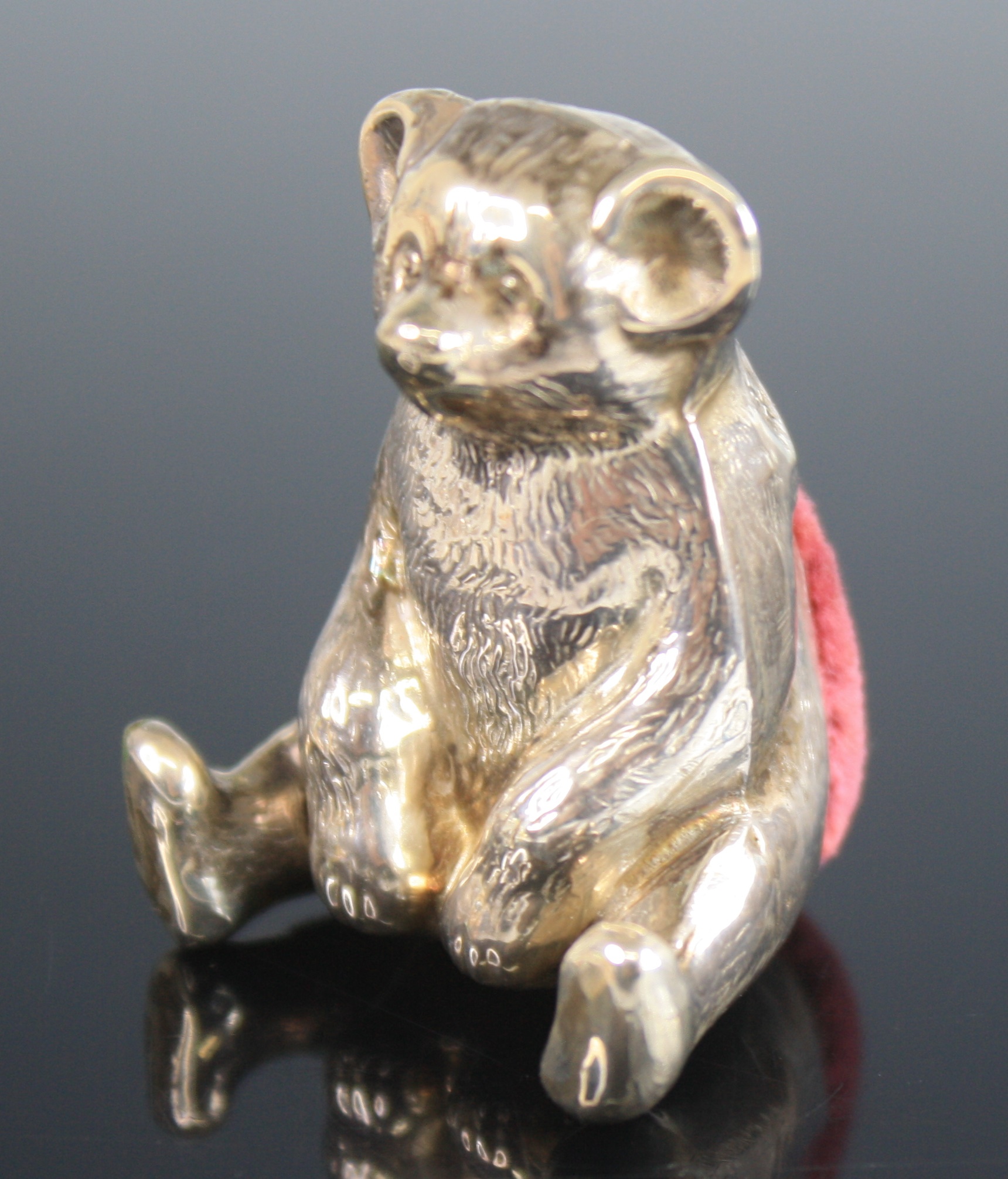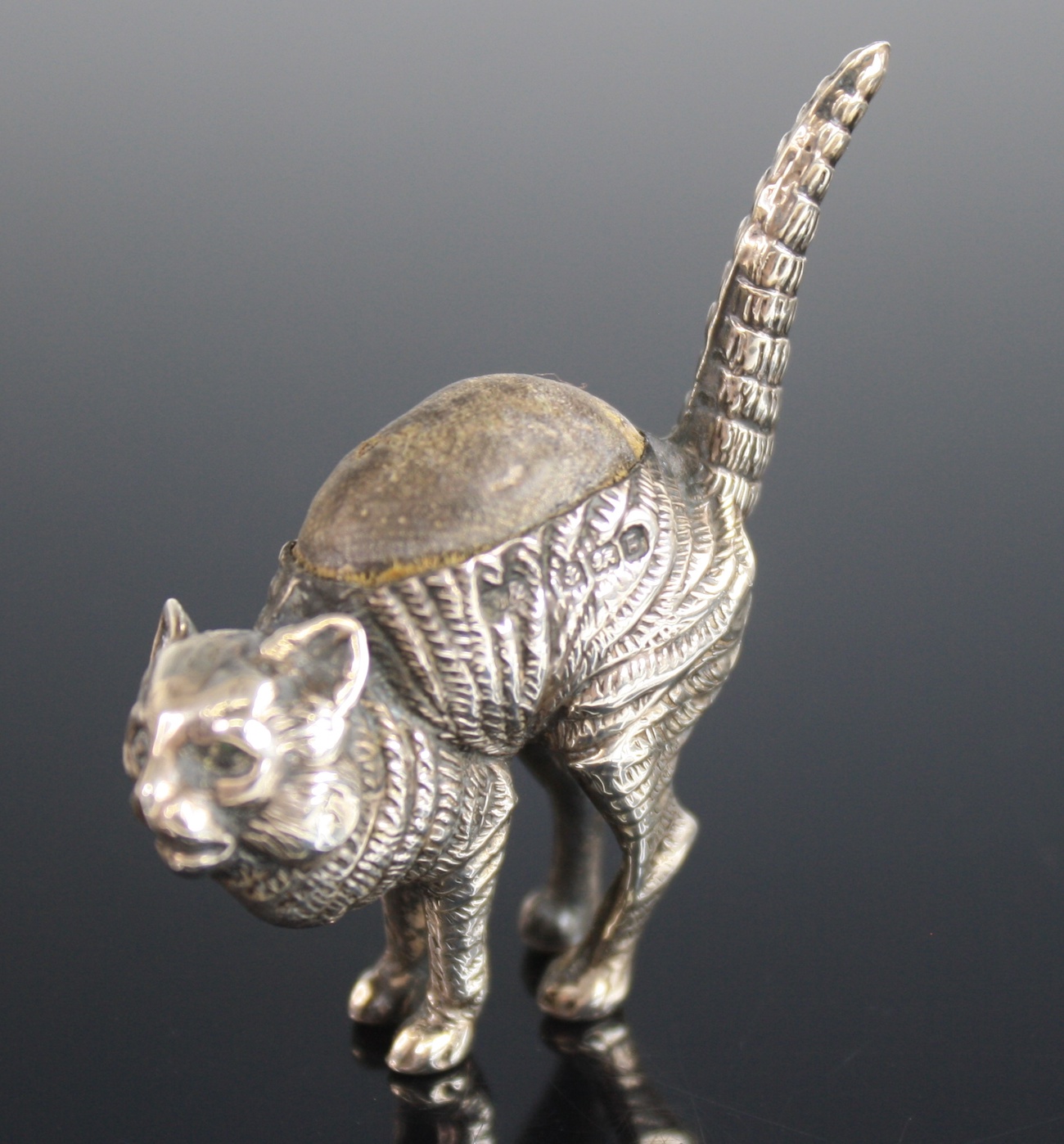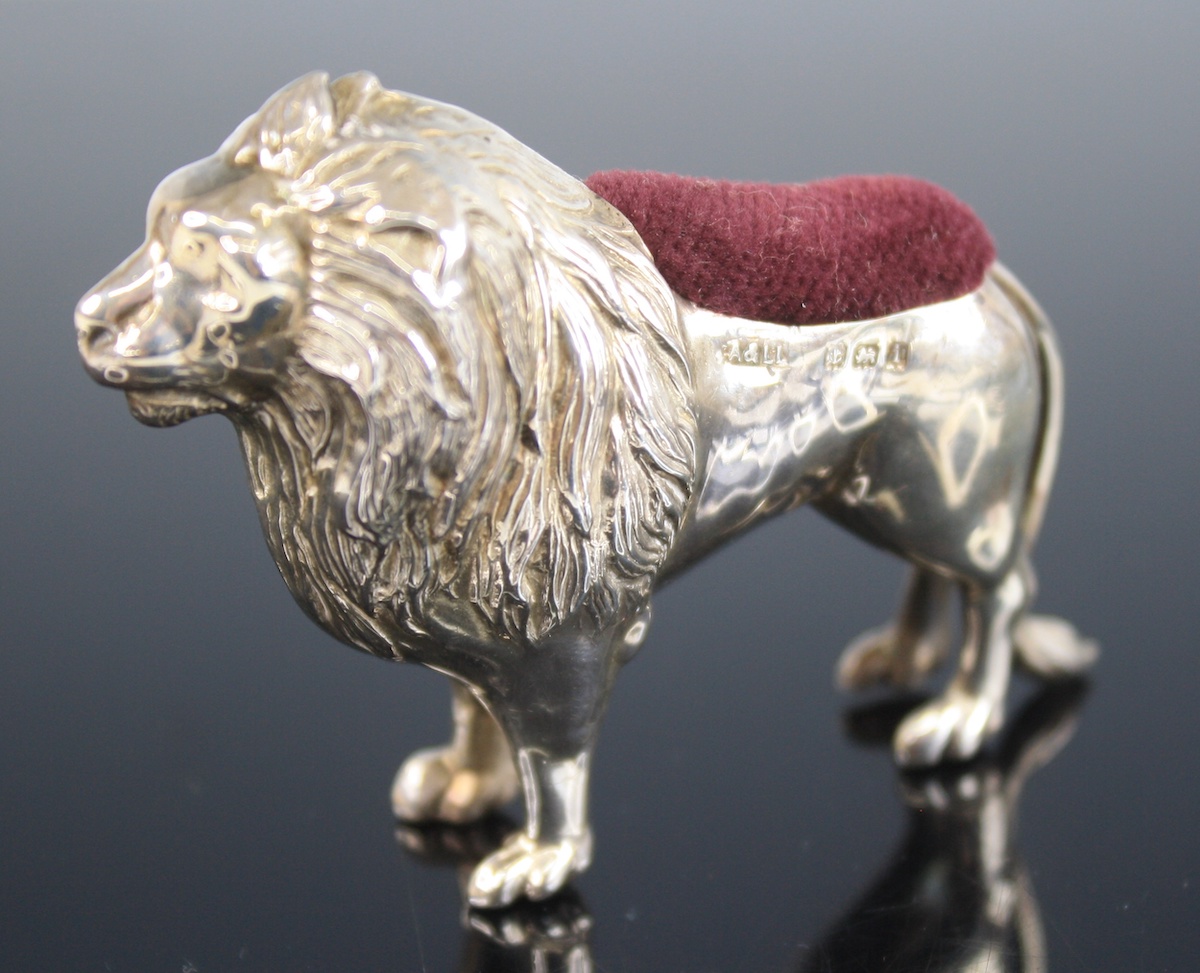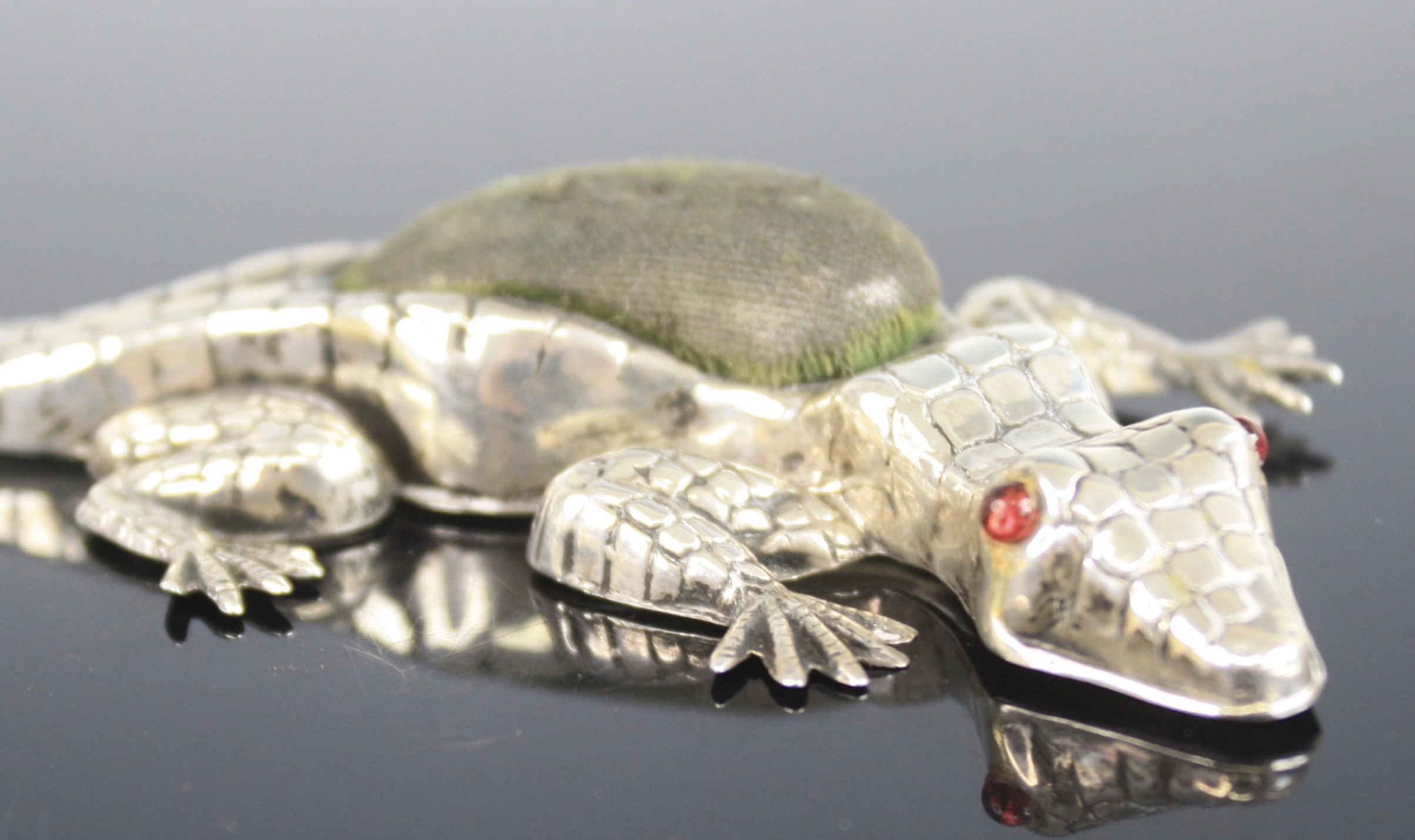#Silver #pin #cushions #collection #Suffolk #sale #Antique #Collecting
 A large collection of Edwardian silver novelty pin cushions will be offered in a Suffolk saleroom this month, including items by a leading maker of the period.
A large collection of Edwardian silver novelty pin cushions will be offered in a Suffolk saleroom this month, including items by a leading maker of the period.
Suffolk auctioneers Lacy Scott & Knight will sell a single-owner collection of almost 40 pin cushion, ranging from a majestic lion and Viking longship to unusual figures such as a crocodile, frog, camel, emu and a balloon back chair.

While few of us regularly sew any more, it was once an frequent and unavoidable task for most households with many sewing kits including pin cushions. However, while pin cushions are rarely found in 16th-century sewing kits, pins and related accoutrements were expensive until the industrial revolution allowed the mass production of household wares. Typically for the Victorians, they soon turned these domestic necessities into something decorative and collectible. Innovative silversmiths, particularly in Birmingham – the great toy shop of Europe – soon began producing pin cushions as novelty trinkets and gifts in various fanciful forms including animals, shoes, and furniture with inset velvet cushions.

Many of the shapes had symbolic meaning for the Victorians and Edwardians, some of which are lost to us today. Chicks were associated with new life and often given to celebrate a birth, while swans imply grace, elephants evoke the owner to remember, and pigs were popular lucky charms. Some may have a more personal significance such as one of the later examples in the collection offered in the sale, produced during the First World War by Adie & Lovekin, which is of an officer’s peaked cap.

Adie & Lovekin produced many of the pin cushions in this collection and were renowned manufacturers of silver fancy goods including baby’s rattles, buckles, brooches and other effects. They were formed from a partnership between Birmingham silversmiths James Adie and Alfred Lovekin in 1863, and the firm continued trading until the 1920s. During this time, they became one of the largest silversmiths in Birmingham, and were successful enough for Alfred Lovekin to commission a large house ‘Tudor Grange’ with stable blocks to be built in the suburbs. Whereas James Adie, who was the son of a button-maker, left an estate worth £56,000 (approximately £8 million today) when he died in 1913.

Several other makers are represented in the collection including similarly successful Birmingham silversmiths Levi & Salaman, and London makers Cornelius Desormeaux Saunders & James Francis Hollings Shepherd who began as specialists in Whitby jet mourning brooches.
An unexpected maker of a teddy-bear pin cushion in the collection is Boots Pure Drug Company which was founded by John Boot in 1849. Although started as a herbalist shop in Nottingham and now a well-known high street chemists, Boots had various offshoots including lending libraries, stationery and fancy goods.
Helen Robson, fine art administrator at Lacy Scott & Knight, commented: “This was a lovely collection to catalogue – particularly the fact that a mundane domestic item was rendered into something beautiful with possible symbolic meaning, although I was stumped by emu! I love the idea that something so small and for everyday use was created by artisan silversmiths and could be weighted with personal history, which makes pin cushions such a fantastic collecting area.”
The auction will take place on September 16.




